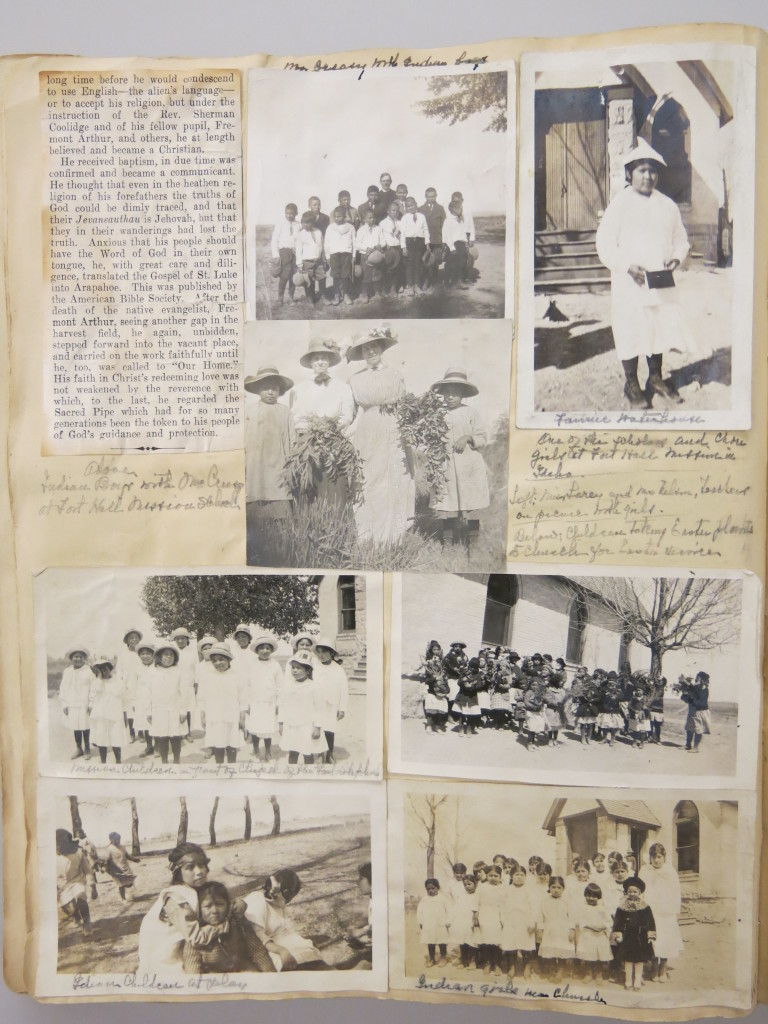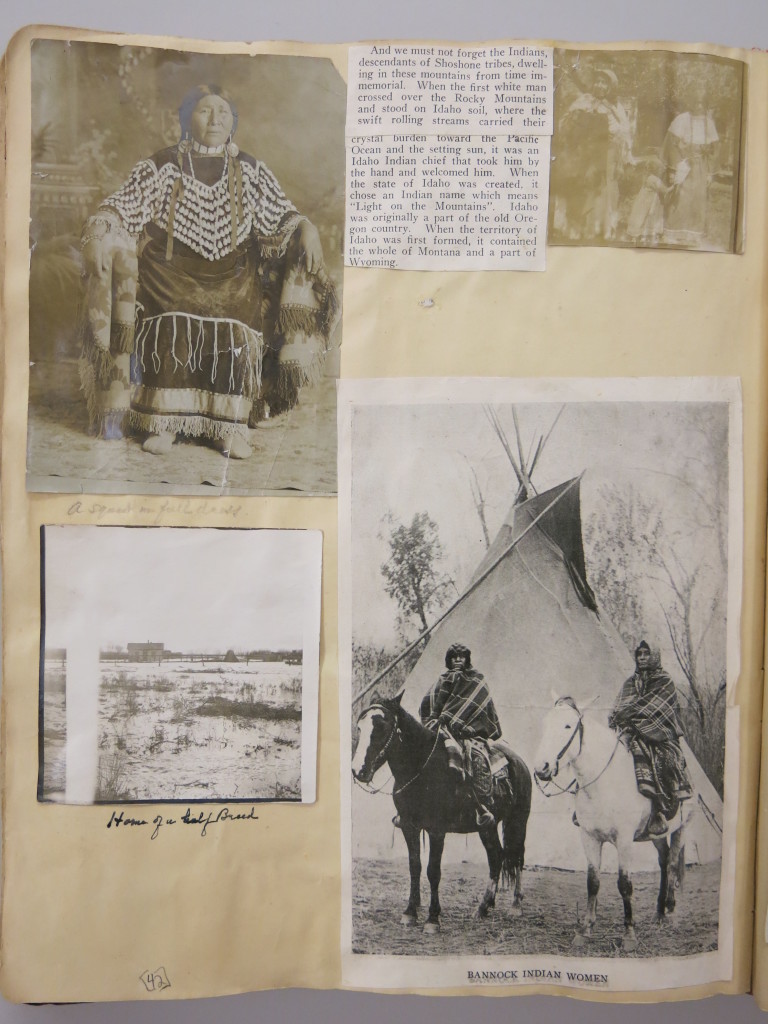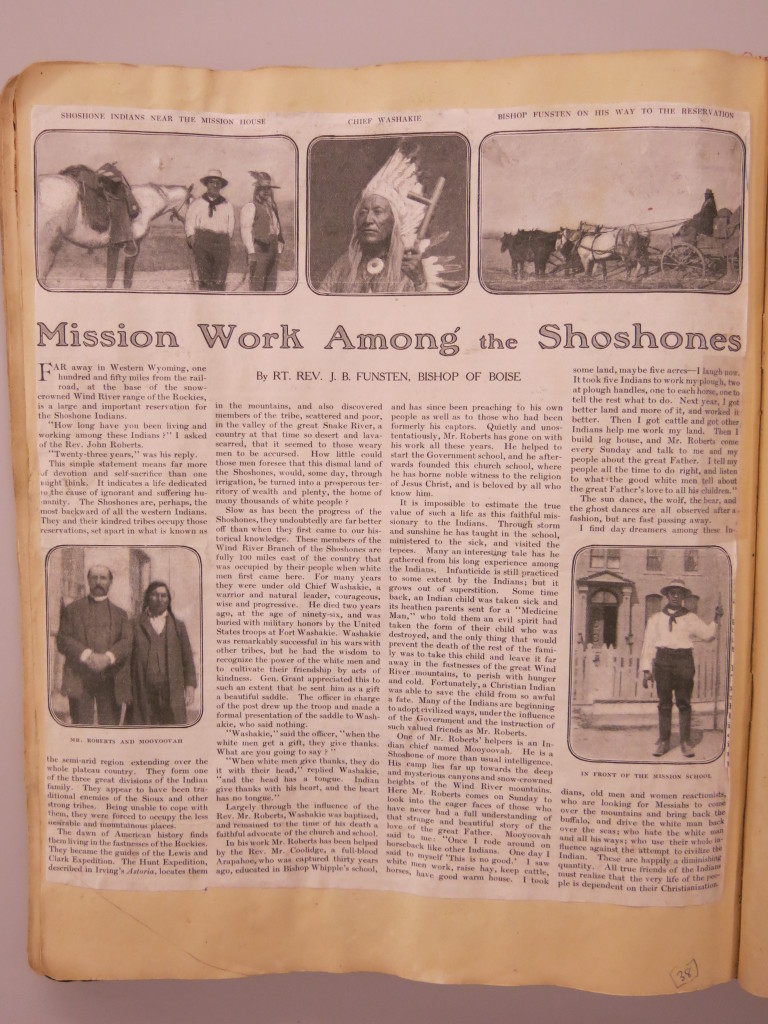12/19/14 – Unexpected Archive Treasures
December 19, 2014Editor’s Note: Today’s post is courtesy of guest blogger Cheryl Oestreicher, Head, Special Collections, Boise State University
As an archivist, I enjoy helping people with their research. It’s a mutually beneficial relationship, as I learn more about our collections from what researchers discover, and in turn I share my existing knowledge. Often, I’m able to point researchers towards information or resources that they didn’t know about.
We get frequent requests for local history information in which this symbiotic relationship plays out. For example, an author may come in requesting information on the Boise Greenbelt. Perhaps they found some of our Boise Development documents online. However, I will share that both the Len Jordan and Frank Church collections also have information. Especially Jordan’s 1967 map showing what the Greenbelt could have looked like without action from the City and other stakeholders. And, I often get to share Bill Onweiler’s 1970 film of the Boise River before the Greenbelt was built.
What I find enjoyable about archival research is unexpectedly discovering items that I wasn’t looking for. Recently, I was looking through the Episcopal Diocese of Idaho Records and I found photographs and other references to Native Americans, specifically at Fort Hall. I was only looking for a few fun items to show at a presentation. What I found is a rich, completely unresearched aspect of a collection.
Episcopal Bishop James Bowen Funsten was Bishop of Idaho (and most of Wyoming) from 1907-1918 who kept a 160-page scrapbook about his activities. The beginning of the scrapbook contains articles about him becoming Bishop of Idaho/Wyoming. There are a few pages about one of his predecessors, Bishop Daniel Tuttle, and an original photo of Christ Chapel when it was on Ridenbaugh St. in Boise’s North End neighborhood. There’s a great photo of the historic Bishop’s House next to St. Margaret’s School (predecessor to Boise Junior College), a very rare photo of the inside of St. Margaret’s School, and photos and articles about the beginnings of Boise’s St. Luke’s Hospital.
Of particular note are the items about Funsten’s missionary work. He traveled across Idaho and Wyoming, but the rarest documentation is about his missionary work at Fort Hall and with the Shoshone and Bannock tribes. He collected postcards and articles about Native Americans in general, but there are original photos at Fort Hall: Chapel of the Good Shepherd, the mission farm, “Indian” children at school, church, and play, and adults in native dress. From today’s perspective, his descriptions of Indians are derogatory but reflect contemporaneous thought and practices.
Archival research is about discovery. Researchers may start by looking for a specific item, but discover more than they were looking for. And as an archivist, it’s always a pleasure to discover an unused treasure in a collection that will hopefully result in excitement from researchers.
— Cheryl Oestreicher, Ph.D.


